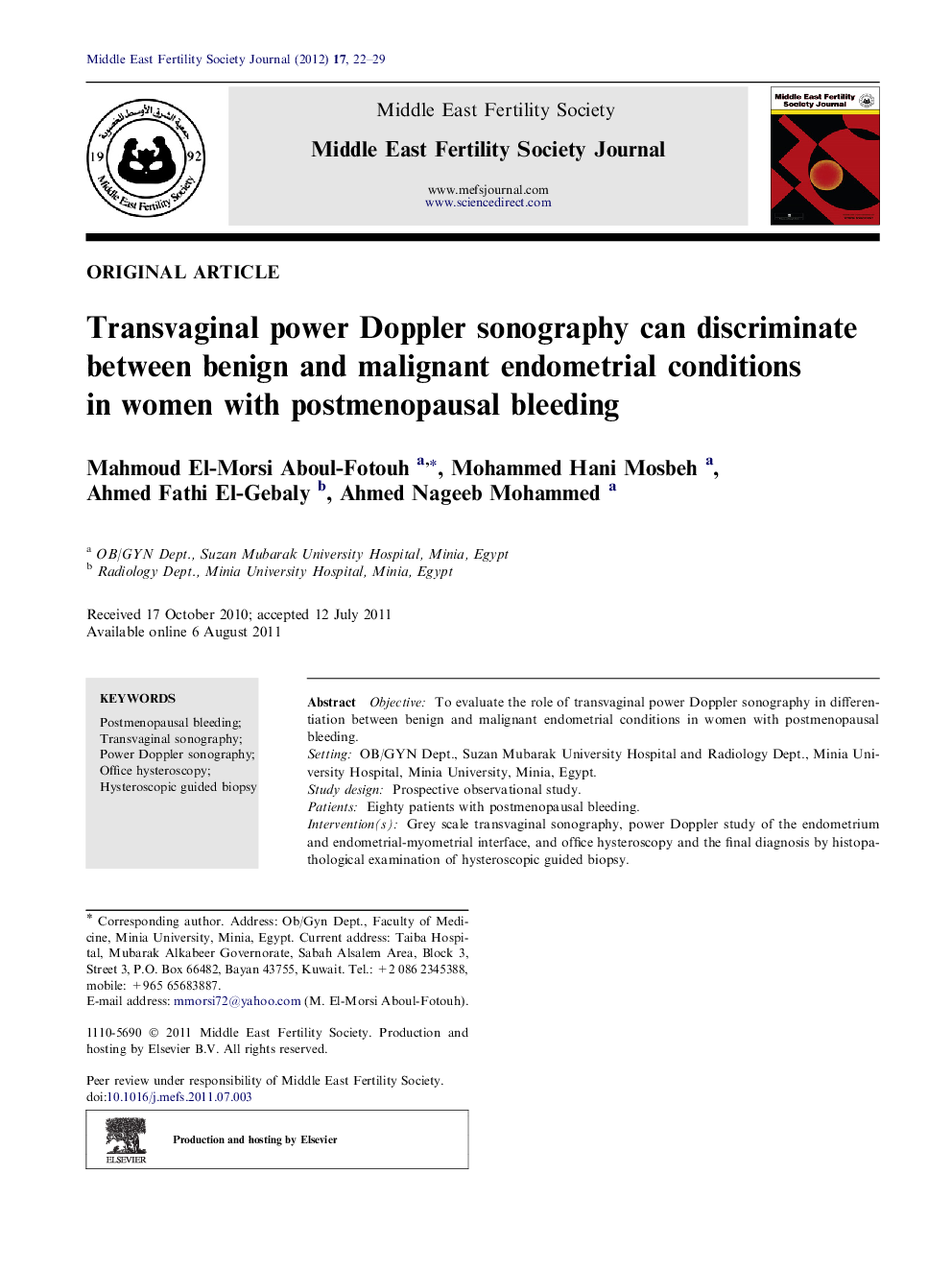| Article ID | Journal | Published Year | Pages | File Type |
|---|---|---|---|---|
| 3966306 | Middle East Fertility Society Journal | 2012 | 8 Pages |
ObjectiveTo evaluate the role of transvaginal power Doppler sonography in differentiation between benign and malignant endometrial conditions in women with postmenopausal bleeding.SettingOB/GYN Dept., Suzan Mubarak University Hospital and Radiology Dept., Minia University Hospital, Minia University, Minia, Egypt.Study designProspective observational study.PatientsEighty patients with postmenopausal bleeding.Intervention(s)Grey scale transvaginal sonography, power Doppler study of the endometrium and endometrial-myometrial interface, and office hysteroscopy and the final diagnosis by histopathological examination of hysteroscopic guided biopsy.ResultsEndometrial power Doppler signals were positive in 69 out of the eighty patients (86.25%): 8 cases showed multiple vessel pattern -A- (10%); 19 cases with single vessel pattern -B- (23.75%); 42 cases with scattered vessel pattern -C- (52.5%) while in the remaining 11 cases (13.75%), no power Doppler signals were detected. The hysteroscopic findings were endometrial polyp in 16 cases (20%), atrophic endometrium in 14 cases (17.5%), hyperplasic endometrium in 32 cases (40%), submucus fibroid in 6 cases (7.5%), cervical polyp in 3 cases (3.75%) and suspicious endometrium for malignancy in 8 cases (10%). Hysteroscopy was more accurate in cases with intra-cavitary masses (polyps and submucous fibroids) than power Doppler, but power Doppler had a more predictive value for malignant endometrium.ConclusionPower Doppler blood flow mapping of the endometrium in women with postmenopausal bleeding is useful to discriminate carcinoma from other endometrial pathologies.
